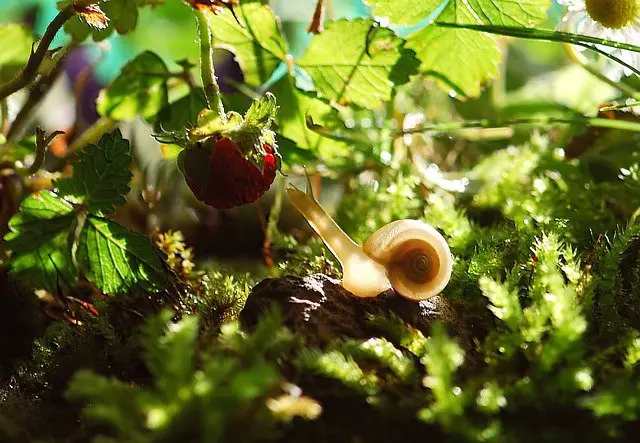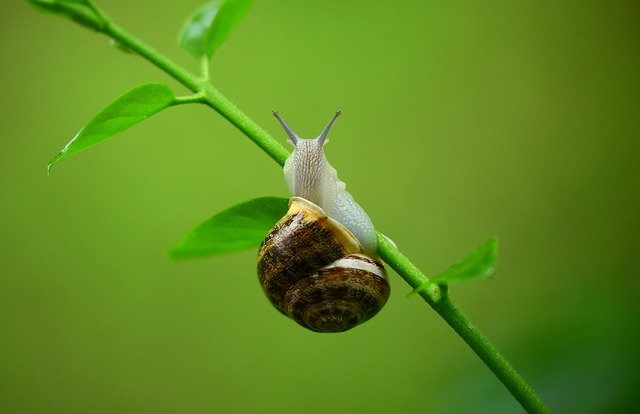As an Amazon Associate I earn from qualifying purchases.
In the grand theater of the underwater world, mollusks take center stage as the gourmets of the sea, enchanting us with their exquisite tastes and dining habits. Among the countless wonders beneath the ocean’s surface, the enigmatic realm of mollusks beckons with a mystique that captivates scientists and nature enthusiasts alike. The unassuming creatures, such as the octopus and snails, showcase a diverse and extraordinary gastronomic world through their graceful dance and mesmerizing trails on the shore. As we peel back the layers of the mollusk’s culinary preferences, prepare to be entranced by the surprises that await – from filter-feeding feasts to predator’s paradises, each morsel of information unveils a captivating chapter in the story of “What do mollusks eat?”
What Do Mollusks Eat?
From the elegant octopus to the alluring snail, mollusks boast an astonishing variety of tastes and diets. In this blog post, we embark on a culinary journey, exploring what these remarkable creatures eat and their surprising role in the marine ecosystem.
1. Phytoplankton: The Plant-Eater’s Paradise
It is important to emphasize that the mollusk food chain’s foundation heavily depends on the unassuming phytoplankton. These microscopic, photosynthetic organisms float near the ocean’s surface, basking in sunlight and converting it into energy. Mollusks like clams, mussels, and some snail species are filter-feeders, using their specialized gills to extract phytoplankton from the surrounding water. These tiny morsels provide essential nutrients, fueling the growth and sustenance of these mollusks.
2. Planktonic Zooplankton: The Little Wonders
Moving up the menu, we find planktonic zooplankton – small, drifting animals that include tiny crustaceans like copepods and larval forms of marine organisms. Some mollusks, such as certain sea butterflies and sea angel species, have adapted to feed on these elusive creatures. They skillfully capture and consume the zooplankton using their velvety appendages and unique feeding structures.
3. Algae: The Vegetarian Delight
Not all mollusks are carnivorous! Many species, particularly certain snails like limpets and some bivalves, have a penchant for algae. These marine vegetarians graze on seaweed and other algae varieties, employing their rasping tongues known as radula to scrape off the algal layers and devour them. Their herbivorous diet is crucial in controlling algal populations and maintaining a balanced marine ecosystem.
4. Detritus: The Nature’s Cleanup Crew
Detritus, or organic matter that has fallen to the ocean floor might not sound appetizing to us, but for some mollusks, it’s a delectable feast. Bottom-dwelling mollusks like sea cucumbers, some snails, and bivalves thrive on detritus, using their specialized feeding structures to sift through the sediment and extract nourishment. Their role as nature’s cleanup crew is invaluable, as they help recycle nutrients and keep the ocean floor clean.
5. Small Fish and Invertebrates: The Predator’s Paradise
When it comes to the top of the mollusk food chain, predatory mollusks steal the show. The octopus, one of the most intelligent mollusks, is a master hunter. Armed with a beak-like mouth and a nasty bite, they hunt and feast on small fish, crabs, and other invertebrates. Additionally, certain snail species, like the cone snail, are skilled hunters, using venomous harpoons to capture prey. These predatory mollusks exemplify the extraordinary diversity of mollusk diets and their adaptation to various niches in the marine environment.
Do Mollusks Have Any Predators?
Despite their diverse and fascinating diets, mollusks are not exempt from the circle of life. They have their fair share of predators in the marine ecosystem. Like any other organism, mollusks play a role in the food chain and serve as a valuable source of sustenance for various predators. Some of the most common predators that target mollusks include:
1. Fish:
Many species of fish, both large and small, prey on mollusks. Some fish have specialized adaptations, such as solid jaws and teeth, to crush the shells of mollusks like clams and snails.
2. Birds:
Coastal and marine birds feed on mollusks like seagulls, herons, and oystercatchers. They use their beaks to pry open shells and extract the soft flesh.
3. Crustaceans:
Certain crustaceans, such as crabs and lobsters, are skilled mollusk predators. They use their powerful pincers to crack open the shells and access the mollusk’s edible parts.
4. Cephalopods:
While some mollusks, like octopuses and squids, are predators themselves, others, like some octopuses, prey on fellow mollusks. They possess strong beaks and venomous saliva to incapacitate their prey.
5. Marine Mammals:
Some marine mammals, such as otters, seals, and sea lions, have a taste for mollusks. They use their skill and sharp teeth to access the mollusk’s flesh inside the shell.
6. Other Mollusks:
Some mollusks have adapted to prey on their kind in the competitive underwater world. For instance, cone snails are notorious for hunting other snails and even small fish, using venomous harpoons to immobilize their prey.
Predation is an essential aspect of the marine ecosystem, helping to regulate populations and maintain ecological balance. Mollusks have developed various defense mechanisms against predators, such as camouflage, rapid retreat, or releasing ink (in the case of cephalopods). This constant battle for survival adds to the complexity and intrigue of the underwater world, where every organism plays a crucial role in the intricate web of life.
How Do Mollusks Help Our Ecosystem?
Mollusks play crucial roles in various ecosystems, contributing to their health and balance in several ways. As diverse and abundant organisms, they offer numerous ecosystem services that benefit marine and terrestrial environments. Here are some ways in which mollusks help our ecosystem:
Nutrient Cycling:
Mollusks, particularly filter-feeding species like mussels and clams, help maintain water quality by filtering large volumes of water. As they feed on microscopic particles, they remove excess nutrients and particulate matter, preventing their accumulation, which could otherwise lead to water pollution and eutrophication.
Habitat Formation:
Certain mollusks, like oysters, build reefs and beds that provide essential habitats for marine species. These structures offer shelter, protection, and breeding grounds for other organisms, enhancing biodiversity and promoting the ecosystem’s overall health.
Food Source:
Mollusks are a vital food source for many predators, including birds, fish, crustaceans, and marine mammals. Their abundance supports the entire food web, from primary consumers to apex predators, maintaining the balance of marine populations.
Decomposition:
When mollusks die, their shells and bodies contribute to nutrient recycling and sediment stabilization. Decomposers break down the organic matter, releasing nutrients into the ecosystem and enriching the soil and water.
Algae Control:
Herbivorous mollusks, like certain snail species, help control algae populations by grazing on seaweed and other algae varieties. This grazing activity prevents algal blooms and maintains the health of marine ecosystems.
Bioturbation:
Burrowing mollusks, such as clams and some snails, aerate sediments as they move and feed. This process, known as bioturbation, promotes sediment oxygenation, facilitating nutrient exchange and benefiting benthic communities.
Indicator Species:
Mollusks are often used as indicators of environmental health and water quality. Their sensitivity to changes in their surroundings makes them valuable bioindicators that help researchers monitor ecosystem conditions and detect potential pollution or environmental stress.
Research and Medicine:
Mollusks, especially certain species of snails and mussels, have contributed to scientific research and medical advancements. Their unique abilities, such as the regeneration of tissues, have inspired studies in tissue engineering and regenerative medicine.
Final Words
In conclusion, mollusks are indispensable players in the intricate dance of life within our ecosystems. Their diverse diets, feeding habits, and roles as predators and prey contribute to a delicate balance sustaining marine life. From purifying water to providing vital habitats and serving as a link in the food chain, these enigmatic creatures play a crucial role in maintaining the health of our planet’s oceans. By recognizing and appreciating their significance, we can foster a deeper understanding of the interconnectedness of all life and work towards conserving these remarkable beings and the ecosystems they support.
You can also try
1.Unveiling the Culinary Delights of the Mysterious Loons: What Do Loons Eat?
2.What Do Kuhli Loaches Eat? A Guide To Their Varied Diet
3.What Do Indigo Buntings Eat?: Discovering the Culinary Delights
4.What Do Hares Eat? A Closer Look into the Diet of These Fascinating Creatures
Amazon and the Amazon logo are trademarks of Amazon.com, Inc, or its affiliates.



